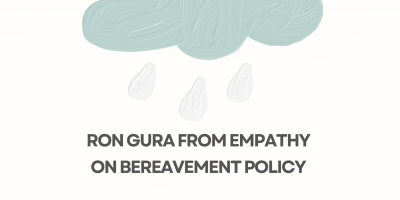
Amy Spurling from Compt on Toxic Work Environments
Employees facing a toxic work environment often find themselves in challenging situations, but there are constructive steps they can take to address the issue.

In America, shopping for products and services always includes price considerations – except when it comes to healthcare. In healthcare, pricing is opaque. There is no transparency. Unlike the grocery store or the auto dealer, there aren’t any price tags.
Worse, government mandates and traditional health plan designs (PPOs, HMOs, HSA-capable coverage, Medicare, Medicaid, etc.) all focus patients on their own out-of-pocket costs – such as Health Reform’s Summary of Benefits & Coverage (SBC) and provisions of the No Surprises Act (NSA).
Even then, because many benefit determinations are done afterward, patients often won’t know the final amount they must pay until weeks or months after services and products are delivered. And, where cost sharing is limited to copayments paid in advance, patients will never know what was charged and the portion they paid.
Unsurprisingly, in such an opaque market where patients learn from experience not to care, pricing varies substantially among patients, plans, providers, locations, and insurers.

In a typical employer-sponsored plan, a PPO or HMO, prices depend on the network’s negotiating ability. Unsurprisingly, almost all networks focus more on contracting with as many qualified providers as possible, even though that also fiercely reduces the network’s willingness to negotiate prices.
Networks seldom negotiate prices comparable to what Medicare and Medicaid pay for the same services and products offered by the same provider. Your network “negotiated” fee is often 170% – 375% more than what Medicare allows and 240% – 570% more than what Medicaid allows.
Because participants can almost always find their provider in the network, they are assured of receiving benefits at “in-network” cost-sharing levels. But workers often end up “sharing” in overpriced services and products – concurrently increasing what their employer must pay, and in turn, potentially negatively impacting the employer’s ability to pay higher wages or provide other benefits.
So, once a participant becomes a patient, they seldom continue as a consumer. And, since the benefit plan defines the cost-sharing in advance, plan sponsors and participants believe they cannot control their costs.
Whether you have heard of BATNA or not, it’s the best alternative to a negotiating agreement. The BATNA is the fallback option where a negotiated agreement cannot be reached. It is seldom in a network’s best interest to deploy their BATNA – leaving a provider out of the network. And, because of the No Surprises Act (NSA), services from many out-of-network providers qualify for in-network benefits and cost-sharing.
Every health plan consultant and broker should prepare an analysis of the network-negotiated fees against Reference-Based Pricing (RBP) to identify the plan sponsor’s BATNA before renewal – so the plan sponsor can walk away from a bad deal.
That’s necessary to identify the ZONA – the “zone of possible agreement,” the area of overlap among each party’s BATNA. Where networks “negotiate” with providers, the provider’s pricing demands dominate the ZONA. There is a ZONA with the network and providers for plan sponsors willing to settle for pricing that is 175% – 375% greater than Medicare.
However, an ever-increasing number of plan sponsors find their BATNA is outside the network’s ZONA, and networks are unable or unwilling to negotiate fair prices for medical services and products.
Those plan sponsors increasingly change plan designs to incorporate RBP. While RBP may not technically qualify as a BATNA, it operates as one because employers cannot reach through the network, leveraging Medicare and Medicaid’s “BATNA” to secure the lowest prices. RBP is the plan sponsor’s best alternative to accepting the network’s negotiated agreements on price.

As the name suggests, RBP uses a reference point for pricing primarily high-cost medical procedures that vary widely from one facility or market to another. In many cases, plans that employ this strategy will use a modest multiplier of Medicare in the 120% to 150% range.
RBP has become a fast-growing, transparent solution for avoiding unreasonable or excessive provider charges at a time of significant price variations on healthcare services in the face of increasingly costly employer-sponsored coverage.
RBP can make treatment more accessible and affordable – minimizing decisions to delay, ration, or avoid costly care. RBP is most likely to achieve the desired reductions in cost when it includes adequate participant protections against balance billing, participant advocacy, and litigation support, as well as acquisition cost-based pharmacy pricing and Health Savings Account-capable coverage.
A “pure” RBP design avoids the fee for network access. It also reduces costs by minimizing the impact of the No Surprises Act (NSA) – the NSA’s provision of in-network benefits for out-of-network services and the NSA’s requirements of open negotiation and independent dispute resolution (IDR).
To demonstrate the impact on plan sponsor and participant medical spending, here is a 2020 claim, reprocessed twice – first, as if the No Surprises Act applied, and second, as if the plan had adopted a “pure” Reference-Based Pricing design.
The coverage is a typical PPO: $2,500 in-network deductible, $5,000 out-of-network deductible, 80%/20% coinsurance, $10,000 in-network maximum, $20,000 non-network maximum.
The charges were: Hospital: $24,100, Surgical: $10,400, Anaesthesiologist (non-network) $12,000, for $46,500. Here is how the exact charges would have been processed in 2020 (before NSA), in 2022 (after NSA), and in 2023 after adopting RBP (@150% of Medicare):
Every plan sponsor acting in its settlor role should consider RBP to maximize the value of health coverage – for both the employer and its employees and their family members.
“Done right,” RBP transforms utilization by offering the best approach to avoid unreasonable or excessive provider charges – removing perceived and real cost barriers by ensuring participants can secure affordable medical treatment.

CEO of aequum LLC
Browse our curated list of vendors to find the best solution for your needs.
Subscribe to our newsletter for the latest trends, expert tips, and workplace insights!

Employees facing a toxic work environment often find themselves in challenging situations, but there are constructive steps they can take to address the issue.

The employee journey isn’t linear; it’s about identifying key moments that shape experiences.

Can Reference-Based Pricing (RBP) shed light on the opaque landscape of healthcare costs?

What strategies can companies adopt to offer more comprehensive bereavement policies and benefits to support their employees during challenging periods?
Shortlister Connect is a tool specifically designed to be utilized by the HR and Procurement/Sourcing teams within mid-size, large and jumbo employers. Shortlister Connect allows these teams to efficiently research & identify their optimal vendor partners, track existing vendor relationships & performance and “connect” with other employers to share successes and vendor experiences.
If you are not on the HR or Procurement/Sourcing team within an employer with over 200 employees, you will not be granted access to Connect. Examples of individuals that would not be granted access include, but are not limited to: vendors, students, practitioners, researchers, other non-employers or anyone that is unwilling to identify themselves will not pass our vetting criteria. If you are a consultant, Shortlister offers a specialized product for consultants, called Shortlister Select. You can email Tom Ciccotti at tciccotti@myshortlister.com to learn more about Shortlister Select.
***Shortlister retains the exclusive right to grant or deny access to any party to ensure the privacy of the vendors in our system.
Please login with your LinkedIn Credentials
Used by most of the top employee benefits consultants in the US, Shortlister is where you can find, research and select HR and benefits vendors for your clients.
Shortlister helps you reach your ideal prospects. Claim your free account to control your message and receive employer, consultant and health plan leads.